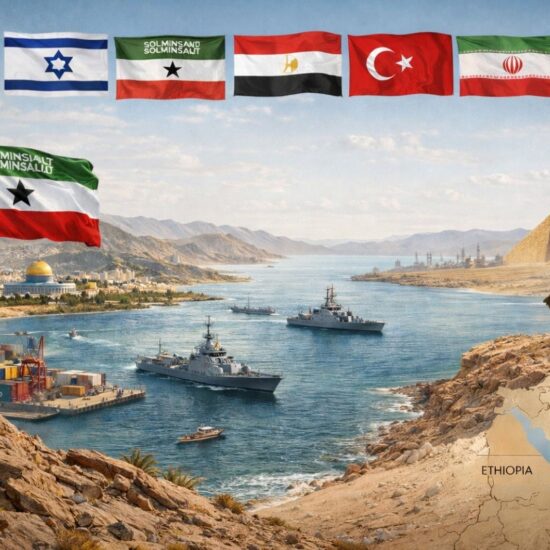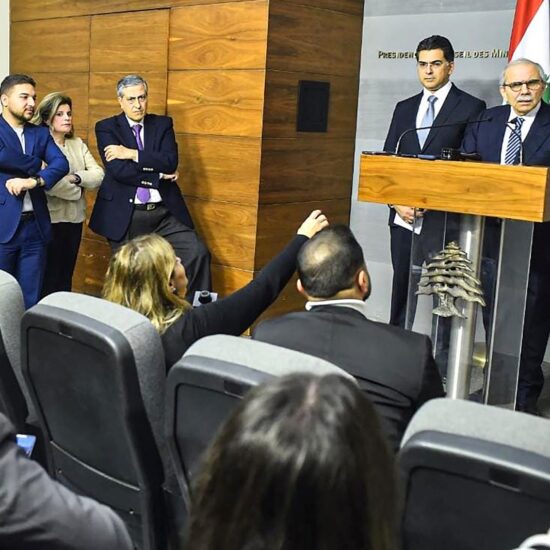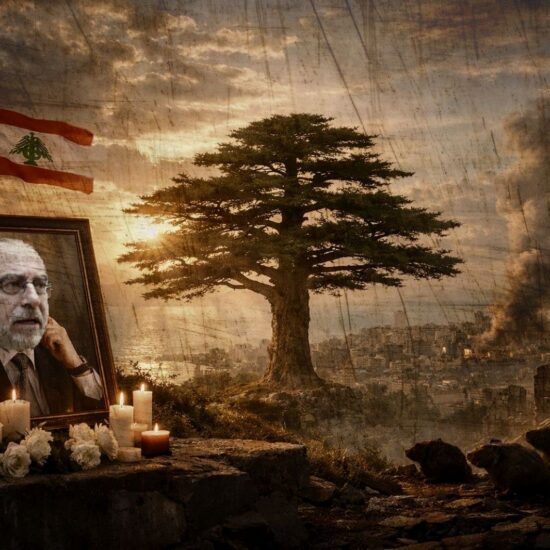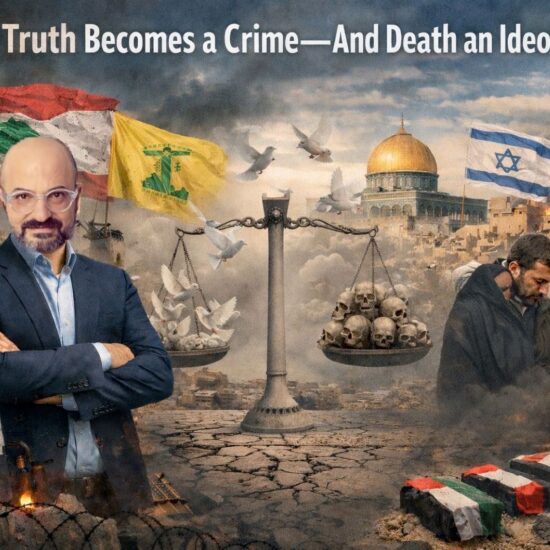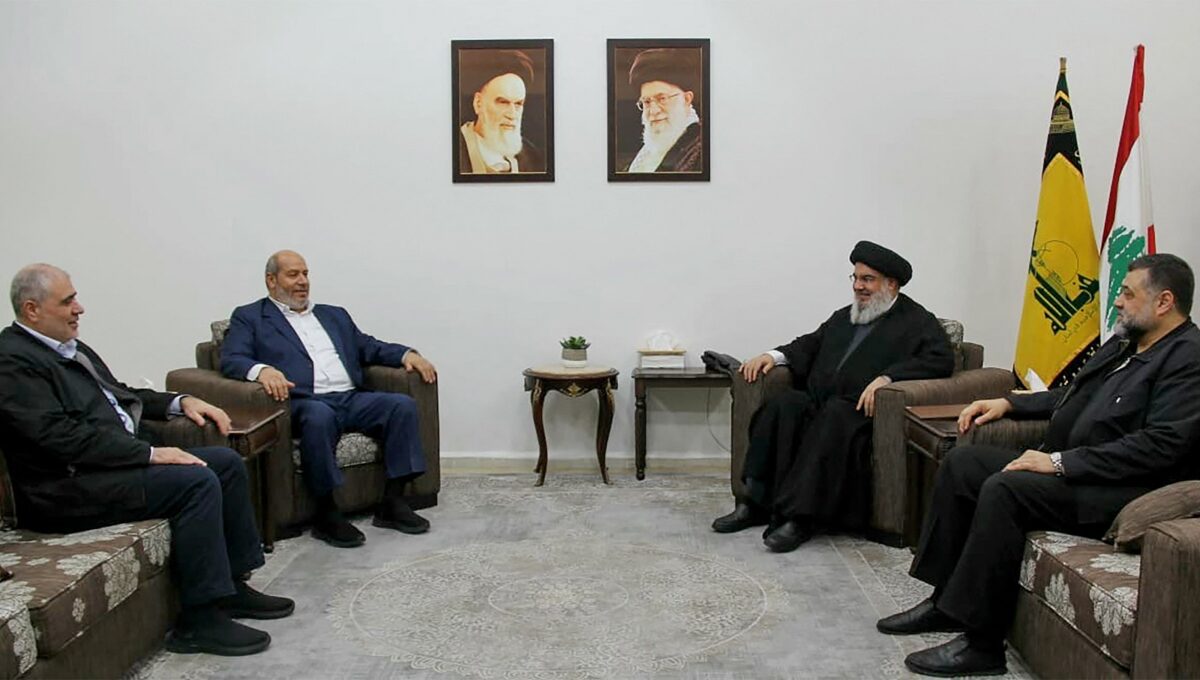
Hamas accepts US proposal on talks over Israeli hostages 16 days after first phase, Gaza, over 20,000 children estimated to be lost, disappeared, detained, buried under the rubble or in mass graves, Israeli strike kills a senior Hezbollah commander in south Lebanon, Hezbollah launches big retaliatory attack on Israel, Sonic booms rattle Beirut, US envoy to hold talks in Paris on defusing Israel-Hezbollah conflict, German intelligence meets with Hezbollah for second time since October 7, Deputy House Speaker suggests shifting the terminology defining Syrians in Lebanon from ‘refugees’ to ‘illegal migrants’, Protests and arrests as anti-Syrian riots rock Turkey, After Russian-Iraqi Mediation, Assad and Erdogan welcome renewed relations and prepare to meet in Baghdad, Close aide of Syria’s President Luna al-Shibl dies after car crash, Moderate Pezeshkian wins Iran’s presidential race, New border security vetting system between Lebanon and Syria causes severe congestion, Ultra-Orthodox Jews took to the street of Jerusalem against forced military conscription, Israeli historian Ilan Pappé foresees the collapse of the Zionist entity, In war-torn Sudan the RSF continue destroying Darfur’s medical infrastructure
A senior US administration official has called it a “breakthrough,” expressing hope that recent negotiation talks could really lead to a pact leading to a permanent ceasefire in Gaza. Hamas has recently accepted a US proposal to begin talks on releasing Israeli hostages, including soldiers and men, sixteen days after the first phase of an agreement aimed at ending the onslaught on Gaza – a senior Hamas source told Reuters on Saturday on condition of anonymity, as talks were held privately. The group is now waiting for response on the possible deal from Israel, where protests aimed at pressuring the government to finalize the pact began on Sunday, July 7, with demonstrators blocking roads and picketing at the homes of government Ministers. According to Israeli media, demonstrations began at 6:29 am, corresponding to the time of Hamas’ October 7 attack on Israel: exactly nine months since the moment that shook the entire region, if not the whole world.
The Palestinian group has demanded that Israel first commit to a permanent ceasefire before signing the agreement, and would allow negotiations to achieve that throughout the six-week first phase. The new proposal foresees that mediators would guarantee a temporary ceasefire, aid delivery and the withdrawal of Israeli troops as long as indirect talks continue to implement the second phase of the agreement. A source in Israel’s negotiating team, also anonymous, has said there was now a real chance of achieving agreement: in sharp contrast to the past-nine months’ instances, when Israel said conditions attached by Hamas were unacceptable.
Netanyahu was scheduled to hold consultations late on Sunday on the next steps in negotiating the US plan – but insisted the deal must not prevent Israel from resuming fighting until its war objectives are met. Those goals were defined at the start of the war as dismantling Hamas’ military and governing capabilities, as well as returning all the hostages. “The plan that has been agreed to by Israel and which has been welcomed by President Biden will allow Israel to return hostages without infringing on the other objectives of the war,” Israel’s Prime Minister stated. Moreover, according to Netanyahu, the deal must prohibit weapons smuggling to Hamas via the Gaza-Egypt border and should not allow for thousands of fighters to return to the northern Strip.
Efforts to secure a ceasefire and hostage release in Gaza have intensified over the past few days – and are expected to continue this upcoming week – with active shuttle diplomacy among Washington, Israel and Qatar, this latter leading mediation efforts from Doha, where the Hamas leadership is based. A regional source said the US administration was trying hard to secure a deal before the presidential election in November.
Meanwhile, though, there seemed to be no letup in fighting inside Gaza, where late on Sunday the Israeli military renewed orders for residents and displaced families in several districts in Gaza City to leave their homes. Some residents said they were surprised by the sounds of tank shells and gunfire from Israeli drones, as some managed to flee and others were trapped at home.
On the southern Lebanese front
At the same time, a Hamas delegation headed by the group’s deputy leader Khalil Al-Hayya briefed Hezbollah’s Secretary-General Hassan Nasrallah about the latest developments at a meeting in Beirut, sources reported, with the latter claiming that the Iran-backed group would cease fire along the Lebanese-Israeli borders as soon as any Gaza ceasefire agreement takes effect, echoing previous statements. “If there is a Gaza agreement, then from zero hour there will be a ceasefire in Lebanon,” the official told Reuters.
Hezbollah and Israel have been trading fire for nearly nine months in hostilities that have played out in parallel to the Gaza conflict, raising fears of an all-out war between the heavily armed adversaries.
However, extensive diplomatic efforts have been put into avoiding a full-out war in Lebanon. The Deputy Director of Germany’s foreign intelligence, Uli Diyal, met for the second time since the start of this year with Hezbollah’s Deputy Secretary-General Naim Qassem, Lebanese newspaper Al-Akhbar reported on July 2. According to Al-Akhbar, Diyal visited Beirut on Saturday and met with Qassem, returning to Berlin the following day without meeting with other Lebanese officials.
The visit came as a continuation of the first meeting between Qassem and Diyal, as well as to complement the visit of German Foreign Minister Annalena Baerbock to Beirut the previous week, during which the importance of de-escalation on Lebanon’s southern borders was stressed. Last week’s meeting also touched on Lebanese citizens in Germany who were recently detained on charges of belonging to or working for Hezbollah: an issue in the hands of Germany’s judiciary, and not within the jurisdiction of intelligence, Diyal confirmed.
During the meeting, Hezbollah’s deputy chief “did not differ from the resistance’s declared position or his position in the previous meeting last January,” as “he reiterated that any discussion of a ceasefire in the south is linked to a ceasefire accepted by the Palestinian resistance in Gaza and that if Western countries fear the outbreak of a major war, they must exert pressure on Israel to stop its war on Gaza,” the sources revealed.
However, despite Israeli Ministers’ threats – the latest of which saw Education minister Yoav Kisch calling for the annihilation of Lebanon, claiming that there is no distinction between Hezbollah and the whole country, and that “Lebanon, as we know it, will cease existing” – the actual condition of the Israeli army would barely allow a ground invasion of the Lebanese territory. The losses suffered by the Israeli army in Gaza, in fact, have significantly diminished its capabilities to wage war on multiple fronts, Israeli journalist Alon Ben David reported on June 28, predicting that the forces are “not currently ready for a broad campaign in Lebanon.”
In Lebanon
Ongoing tensions: Hezbollah launched a big rocket and drone attack at Israel on Thursday, July 4, and threatened to hit new targets in retaliation for the killing of top commander Mohammed Nasser – also known as Hajj Abu Nehme, in the latest surge of violence in the steadily worsening conflict across the border.
Hezbollah said it launched more than 200 rockets and a swarm of drones at 10 Israeli military sites in retaliation for Israel’s killing of one of the most senior Hezbollah commanders. The Israeli military confirmed around “200 projectiles and over 20 suspicious aerial targets were identified crossing from Lebanon into Israeli territory,” a number of which were intercepted by Israeli air defenses and fighter jets.
In response, Israeli air force struck Hezbollah military structures in the areas of Ramyeh and Houla, south Lebanon. Meanwhile, two individuals, including Al Jazeera reporter, Ahmad Ghanem, were injured on Thursday when Ghanem’s home on the outskirts of southern Lebanon’s Kfarchouba was hit by Israeli shelling.
As the latest violence played out in areas at or near the frontier – in keeping with the pattern of the last nine months – the sound of sonic booms rattled nerves for the second successive day in Beirut and other parts of Lebanon. Israeli jets broke the sound barrier over several areas of the country, Lebanon’s state-run National News Agency (NNA) reported.
Diplomatic push: The United States has been leading diplomatic efforts to de-escalate the fighting in south Lebanon, while Hezbollah has said it will not cease fire as long as Israel continues its offensive in the Gaza Strip.
Amos Hochstein, the senior US official at the heart of the diplomacy, discussed French and American efforts to restore calm in meetings with French officials on Wednesday, a White House official said. “France and the United States share the goal of resolving the current conflict across the Blue Line by diplomatic means, allowing Israeli and Lebanese civilians to return home with long-term assurances of safety and security,” the official said, referring to the demarcation line between the two neighboring countries.
Israeli attacks in Lebanon have killed more than 300 Hezbollah fighters and some 90 civilians, according to Reuters tallies. Israel says fire from Lebanon has killed 18 soldiers and 10 civilians.
Evicted: Dozens of street vendors along the Abou Ali river, near Tripoli Souks, were forced by the Army to destroy their shops under threats of eviction. Veggies and fruits were thrown to the river, local witnesses reported. A few months ago, sellers were asked to move to a street which was packed with wooden stalls.
From refugees to illegal migrants: Deputy House Speaker, Elias Bou Saab, on Thursday welcomed UN Special Coordinator for Lebanon, Jeanine Antoinette Hennis-Plasschaert, NNA reported. Discussions primarily focused on the Syrian refugee crisis, with Bou Saab urging the UN to find a swift and serious solution. He emphasized shifting the terminology from ‘refugees’ to ‘illegal migrants,’ stating that “it is no longer appropriate to classify them as refugees.”
On the same topic, Major General Elias Baisari, the Acting Director of Lebanon’s General Security, on Thursday called for unified political action and societal support to address the extensive Syrian refugee crisis. In an interview with General Security magazine, as reported by NNA, Baisari stated: “The Syrian refugee crisis is too vast for the General Security to handle alone; it requires a united political decision and a supportive Lebanese society.”
Moreover, Baisari criticized the United Nations High Commissioner for Refugees (UNHCR) for withholding crucial data on Syrian refugees, attributing it to international pressure. “Any attempt to address the Syrian refugee crisis without accurate data is futile and nonsensical,” he remarked. He also insisted, “we are adamant about receiving the full data unconditionally, as it is our sovereign right.”
Earlier in June, after a cabinet meeting, caretaker Minister of Information Ziad Makari had said that the data handed over to the Lebanese State by UNHCR in Lebanon was “incomplete,” lacking an “essential component,” namely “the date of entry of these refugees into Lebanese territory.” However, as of 5 May 2015, the UNHCR official website reads, “Syrian nationals can no longer register with UNHCR. Registration for Syrians has been suspended until further notice. While you can contact UNHCR for an interview, please note that you will not be given a registration certificate. The suspension for registration does not affect non-Syrians in Lebanon.”
UNHCR and the Lebanese Government reached a data-sharing agreement on August 8 last year. In line with the agreement, UNHCR effected a one-off transfer of basic biodata of Syrian refugees in Lebanon in December 2023.
On its side, the Lebanese government has committed to not using any shared data for purposes contrary to international law, reaffirming its commitment to the principle of non-refoulment and its obligations under international law – although since May the General Security has announced a series of restrictive measures aimed at “containing and regulating the issue of Syrians present in Lebanon,” at a time when the country is facing an upsurge in xenophobic acts against them, and the resumption of “voluntary returns” of Syrians to their country – which international organizations criticize as illegal, viewing them as disguised expulsions.
Congested: A source from Lebanese Public Security denied reports about the closure of the Masnaa border crossing with Syria, The New Arab reported. The source explained that the congestion at the crossing was due to changes in the security audit system, which caused delays in procedures, adding that Lebanese General Security was working to implement at Masnaa a similar security mechanism to the one employed at the Beirut airport.
Local Syrian websites had reported that the border crossing was closed due to severe congestion and long waiting times of over six hours to complete entry procedures into Lebanon, causing many Syrian travelers to turn back from the border. Statements from tourism companies operating on both sides of the border indicated that the complications at the crossing persisted, causing many Syrians to miss their flights departing from Beirut Airport due to the delays and congestion. However, travelers returning from Lebanon to Syria reported no delays at the return gate to Syria.
Rumors circulated in social media platforms alleging that the Masnaa crossing was completely closed, linking the crossing to a possible Israeli offensive in Lebanon. The Masnaa crossing is also where the Lebanese army has deported Syrians back to Syria over the last two years, in what rights groups say is violation of refugees’ human rights.
In The Region
Syrian refugees hunt: Since the release of a video in which a Syrian refugee is allegedly molesting a 7-year-old girl, a wave of anger and violence has exploded in southern Turkey which has expressed itself in fires, acts of vandalism and attacks against the refugee population. The clashes led to 470 arrests among Turkish citizens, in addition to that of the molester, while social services intervened to help the little girl, her sisters and her mother.
Concentrated in Gaziantep and in Adana, Reyhanli and Nizip in southern Turkey, Syrians have been subjected to direct attacks, including the stabbing of a Syrian refugee returning from his night shift in Gaziantep.
Some media called it a ‘pogrom’ while rivers of hatred have poured out on social media, echoing the speeches heard in the recent Turkish election campaign, in which both sides promised solutions to the so-called “Syrian problem.” Already in August last year, government forces also promised the repatriation of refugees: in many instances, this campaign applied even to Syrians who hold legal residency papers in Turkey.
Recently, the number of cases of Syrians accompanied across the border by Turkish security forces has increased significantly, with testimonies speaking of vans carrying out searches and checks even in homes and shops. Towards the evening, local witnesses report, the refugee population lock themselves in their homes for fear of capture, and many think twice before speaking Arabic in public.
Turkey has hosted millions of Syrians since the first wave of refugees escaping war in 2012, and has received billions in funding from the EU to keep them on its territory. At the same time, Turkey is present in the north-west of Syria, where the Damascus regime has amassed a large part of the population considered disloyal, and is the sponsor of many militias and opposition movements.
In the first years of the Syrian crisis the Turkish economy was going through a positive phase; the first ones to arrive were those Syrian men and women who had the resources to rent houses and perhaps move their craft or commercial activities. Subsequently, the Syrian population grew, constituting a pool of indispensable labor force on the one hand, and on the other in competition with the Turkish working class which asked for better salaries and guarantees than those accepted by the new arrivals. Today the economic situation for the Turkish economy is much more complex and the flow of humanitarian aid for the Syrian population has also greatly diminished, with the international community’s interest directed first towards Ukraine, then towards Gaza.
In north-west Syria: Turkish President Erdogan blamed the explosion of violence on hate speech spread by the nationalist opposition, while many Syrian forces opposing the Syrian regime appealed to Erdogan himself to take the necessary measures, and called for calm after in many areas of north-west Syria demonstrations of protest and reaction against racist attacks were faced with weapons by local pro-Turkish militias, attacks on Turkish military posts, and flags set on fire.
In response, the Turkish authorities cut off internet access in all areas under their control.
The demonstrations gave voice both to anger at the widespread anti-Syrian racism in Turkey and to the reconciliation between Erdogan and Assad, with Iraqi and Russian mediation – as well as the opening of commercial crossings between the Syrian regime-controlled areas and Turkey, which is said to intend to withdraw from the areas it controls and hand them over to the Syrian regime. A process of rapprochement that has been going on for over a year and which in recent days seems to have resumed impetuously, after a setback.
Imminent meeting: Al-Watan newspaper, close to the Syrian regime, reported that a meeting between the Turkish government and representatives of the Syrian regime will take place soon in Baghdad, Iraq.
In its report, published on Sunday, June 30, the newspaper mentioned that the Turkish side requested that mediators from the Iraqi and Russian governments arrange a bilateral meeting with the Syrian side, away from the media. This news comes weeks after renewed Russian efforts, supported by the Iraqi government, to normalize relations between Damascus and Ankara.
Turkish President Recep Tayyip Erdogan told reporters last Friday that he is open to meeting Bashar al-Assad, recalling the family meetings that took place between the two sides twenty years ago. This statement was in response to Bashar al-Assad’s comments following his meeting with Russian envoy Alexander Lavrentiev last Wednesday, where Assad confirmed Syria’s openness to all initiatives related to improving relations with Turkey.
Moreover, amid Syrian-Turkish rapprochement, the Autonomous Administration in Northern and Eastern Syria (AANES) decided to close all crossings with regime-controlled areas. Local news networks reported that the decision was linked to security measures accompanying the local elections in areas under the administration’s control.
Moreover, AANES released a statement accusing Turkey of seeking reconciliation with the Syrian regime “at the expense of Syrian blood,” calling any potential agreement a “major conspiracy against the Syrian people of all sects.”
The death of Luna al-Shibl: Prominent Syrian media adviser Luna al-Shibl died on Friday, July 5, following a car crash earlier this week, prompting conspiracy theories that her death was related to disputes involving the government of President Bashar al-Assad. The Syrian presidency announced Shibl’s death on Friday evening and expressed its condolences to her family.
“The presidency of the Syrian Arab Republic mourns the death of the adviser Luna al-Shibl, who passed away today after a serious car accident,” it said in a statement, adding that “she served in recent years as a director of the political and media office of the presidency and then as a special adviser to the presidency.”
The 48-year-old rose to prominence for quitting a prestigious journalism career at Qatar-based broadcaster Al-Jazeera to become Assad’s media adviser at a time when Damascus was cracking down on peaceful protesters in 2011, triggering Syria’s ongoing civil war. But her role expanded well beyond communications, carving out a place within Assad’s inner circle as she accompanied him to high-level meetings in Syria and on his rare visits abroad. She played an important role during the most intense years of the civil war and was part of the delegation to ultimately doomed peace talks in 2014.
Shibl and her husband, Ammar Saati, were sanctioned by the United States in 2020. The US Treasury Department said at the time that she was “instrumental in developing Assad’s false narrative that he maintains control of the country and that the Syrian people flourish under his leadership.”
Britain-based war monitor, the Syrian Observatory for Human Rights, reported earlier this week that Luna had fallen out of official favor in recent months and her brother Mulham had been arrested “on charges of communicating with a party hostile to Syria” after Israel struck the Iranian consulate in Damascus last April. “There was growing dissatisfaction with her within the regime,” said Observatory director Rami Abdulrahman. “Accusations surfaced that she leaked minutes of closed meetings between Assad and Iranian officials,” he added.
A small number of people attended Luna’s quiet funerals on Saturday in Damascus, where she was buried in Al-Dahdah cemetery, rather than in her birthplace Al-Suwaidaa. Syrian TV anchors did not wear black mourning attire for her death, and Syrian media did not broadcast video tapes from the funeral, unlike what they did for officials and insiders of the Syrian regime who died in recent years.
In Palestine: On July 1, the Israeli army ordered a new evacuation of some areas of the southern Gaza Strip, forcing hundreds of people to flee again. A few hours earlier the Palestinian armed group Islamic Jihad had claimed responsibility for rocket attacks towards Israel. That same day and on the following days, the army bombed Khan Yunis and Rafah, in the south of the Palestinian enclave, while its operations also continued in Shujaiya, in the north.
Dozens of Palestinian prisoners, including Muhammad Abu Salmiya, director of Al-Shifa hospital in Gaza, were freed by Israel on July 1 and transferred to medical centers in the Palestinian territory. Abu Salmiya, who was detained for seven months without formal charges, denounced in a press conference that the prisoners had suffered “torture of all kinds” and many of them “died in interrogation centers and were left without eat and without care.”
Hospitals in the Gaza Strip have been hit hard since the start of the Israeli military operation. Al-Shifa, the largest in the territory, was bombed particularly intensely. At least three mass graves were discovered near the facility in April and May.
Gaza’s missing children: Up to 21,000 children are estimated to be missing in the chaos of the war in Gaza, many trapped beneath rubble, detained, buried in unmarked graves, or lost from their families, said Save the Children in its latest report. The agency’s child protection teams are reporting that the latest displacements caused by the offensive in Rafah have separated more children and further increased the strain on families and communities caring for them.
It is nearly impossible to collect and verify information under the current conditions in Gaza, but at least 17,000 children are believed to be unaccompanied and separated and approximately 4,000 children are likely missing under the rubble, with an unknown number also in mass graves. Others have been forcibly disappeared, including an unknown number detained and forcibly transferred out of Gaza, their whereabouts unknown to their families amidst reports of ill-treatment and torture.
Meanwhile, the aid agency’s child protection teams warn of the urgent action needed to protect separated and unaccompanied children – action that is severely undermined by the deteriorating security situation. “Every day we find more unaccompanied children and every day it is harder to support them. We work through partners to identify separated and unaccompanied children and trace their families, but there are no safe facilities for them – there is no safe place in Gaza,” a Save the Children Child Protection Specialist in Gaza said. “Neighbors and extended family members who have taken in lone children are struggling to meet their basic needs, such as shelter, food, and water. Many are with strangers – or completely alone – increasing the risk of violence, abuse, exploitation and neglect.”
According to Gaza’s Ministry of Health, more than 14,000 children have been killed since October 7, roughly half of whom have not yet been fully identified, partially due to their bodies being harmed beyond recognition. As of 9 June, around 250 Palestinian children from the West Bank are also missing in the Israeli military detention system, their families unable to physically confirm their whereabouts and wellbeing due to additional restrictions on visits introduced since October.
In Israel: In recent days there have been several protests by ultra-Orthodox Jews in Israel, against the ruling of the supreme court which on June 25 ordered the conscription of students from yeshivas, Jewish religious schools, who until now had been exempted from military service. Thousands of men took to the streets in Mea Shearim, one of Jerusalem’s oldest Jewish neighborhoods and the heart of the ultra-Orthodox community, and in some cases clashed with police.
Today, more than 60,000 ultra-Orthodox are registered as yeshiva students and are exempt from military conscription. Late-June’s ruling established that three thousand members of the community will have to be conscripted, in addition to the approximately 1,500 already present in the army. Meanwhile, the Knesset is examining a bill to gradually introduce compulsory military service for others as well.
The protesters told BBC journalist Yolande Knell that they feared that the supreme court ruling could put their way of life at risk. Haredim – the Hebrew term for ultra-Orthodox – are convinced that their prayers and spiritual knowledge are what protect Israel and the Jewish people. As Al-Jazeera illustrated in an in-depth report, the Haredim are the most strictly observant sect of Judaism and isolate themselves from the rest of society to dedicate their time to prayer and liturgy. Initially the community represented a small minority in Israel, but has now expanded to number one million people and constitute almost thirteen percent of the population. Ultra-Orthodox women have an average of 6.5 children, compared to 2.5 for Israeli Jews, and one in four children is ultra-Orthodox.
Zionism in crisis: The issue has long been a cause of tension with secular Israeli Jews, most of whom carry out compulsory military service (32 months for men and 24 for women) and pay six times higher taxes than the ultra-Orthodox. But it has become more urgent in the face of the needs of the Israeli army, engaged in its offensive in the Gaza Strip and with the prospect of a new war front with Hezbollah on the border with Lebanon.
Ultra-Orthodox parties have always been crucial in Israeli politics: they have guaranteed their support to various governments led by Benjamin Netanyahu in exchange for exemption from military service and hundreds of millions of dollars to their institutions.
Spotting in six indicators – the fracturing of Israeli Jewish society, Israel’s economic crisis, Israel’s growing international isolation, the sea-change among young Jews around the world, the weakness of the Israeli army, and the renewal of energy among the younger generation of Palestinians – the reasons of the looming crisis of the Zionist project, Israeli historian Ilan Pappé highlighted for The New Left Review the foreseeability of Israel’s collapse.
Iran’s new President: The low-profile moderate Masoud Pezeshkian, who has pledged to open Iran to the world and deliver freedoms its people have yearned for, has won the country’s run-off presidential vote, the Islamic Republic’s Interior Ministry said on Saturday. “By gaining a majority of the votes cast on Friday, Pezeshkian has become Iran’s next President,” it announced.
The participation was around fifty percent in a tight race between Pezeshkian, the sole moderate in the original field of four candidates, and hardline former nuclear negotiator Saeed Jalili, who advocates for deepening ties with Russia and China. The run-off on Friday followed a June 28 ballot with historically low turnout, when over 60% of Iranian voters abstained from the snap election for a successor to Ebrahim Raisi, following his death in a helicopter crash.
Voter turnout in Iran has plunged over the past four years, which analysts say underlines that support for clerical rule has eroded at a time of growing public discontent over economic hardship and curbs on political and social freedoms. Only 48% of voters participated in the 2021 election that brought Raisi to power, and turnout was 41% in a parliamentary election in March.
While the election is expected to have little impact on the Islamic Republic’s core policies – for example concerning the nuclear programme or support for militia groups across the region -, the President will be closely involved in selecting the successor to Ayatollah Ali Khamenei, Iran’s 85-year-old Supreme Leader. Moreover, Pezeshkian’s triumph might promote a more pragmatic foreign policy, and improve prospects for social liberalization and political pluralism, analysts said.
A 69-year-old surgeon of Azeri origin and deputy of the city of Tabriz, Pezeshkian was Health Minister between 2001 and 2005 in the government of reformist Mohammad Khatami. He favors intensifying Iran’s relations with Western countries, including the United States, with the aim of easing sanctions that are strangling the country’s economy. While reiterating his loyalty to Supreme Leader Ali Khamenei, Pezeshkian criticized the authorities’ crackdown on the protests that erupted after the death of Mahsa Jina Amini in September 2022.
However, an article by Iran Wire underlined that the activists of the Woman, Life, Freedom movement, born during the 2022 protests, want a “change in the political structure of Iran” and no longer have faith even in the reformists. Various testimonies have emerged on social networks of women who were prevented from accessing the polls because they did not respect the strict dress code, wearing the veil in a way considered incorrect or showing up bare-headed.
Eyes on Sudan: In war-torn Sudan, the Rapid Support Forces (RSF) continue destroying Darfur’s medical infrastructure. In their latest attack last Sunday evening, the RSF attacked El-Fasher dialysis center, the only center in north Darfur. Moreover, an attack on a market in the city resulted in 15 civilians being killed and 29 injured, Health Minister Ibrahim Khater told the AFP news agency on Wednesday.
The civil conflict in Sudan is approaching its sixteenth month, with tens of thousands of people killed and millions displaced in what international organizations say is the world’s worst displacement crisis. Fighting erupted between forces loyal to the Sudanese Armed Forces (SAF) and the paramilitary RSF in April 2023, the two factions vying for control of the country.
While fighting continues in north Darfur’s El-Fasher, the RSF began attacking towns in the southeastern state of Sennar last month, sending more than 136,000 people fleeing since June 24, according to the United Nations. Civilians fled fighting in Sennar’s towns of Sinja and al-Dinder, mainly to neighboring al-Gedaref and Blue Nile states, the United Nations Office for the Coordination of Humanitarian Affairs (OCHA) said in a report. There were already some 286,000 displaced people sheltering in Sinja and al-Dinder before the recent clashes broke out, OCHA said.
Approximately 10 million people have been forcibly displaced in Sudan since the war broke out, the UN refugee agency (UNHCR) said on Tuesday. Some 7.7 million are internally displaced, while more than two million have fled to neighboring countries – including Egypt, Chad, the Central African Republic and Ethiopia.
What We’re Reading
The grand illusion: NOW’s economist Maan Barazy has reported that Lebanon’s Central Bank (BDL) is seeking parliamentary approval to allow banks to introduce credit facilities in ‘fresh’ dollars with high interest rates to start compensating for their losses. This new payment system will allow repayment of loans in the same fresh currency. The acting governor Wissam Mansouri has been disseminating openly his will to enact a new banking credit mechanism despite being reluctant to rule over the state of deposits and credits since the 2019 debacle. But what will be the source of funding of these new loans knowing that banks are short of paying their depositors? How safe is it for the profit and loss of the banks?
Two sides of Lebanon: Rodayna Raydan analyzed how, despite rising tensions on the southern borders between Hezbollah and Israel, summer 2024 in Lebanon is marked by a series of high-profile concerts, showcasing the nation’s enduring cultural vibrancy. Moreover, Beirut airport continues to see a significant influx of arrivals from around the world – driven by the strong ties of the Lebanese diaspora and the resilience of Lebanon’s tourism sector.
The Arab League on Hezbollah: Political psychologist Ramzi Abou Ismail wrote for NOW about the late decision of the Arab League to remove the ‘terrorist organization’ label from Lebanon’s Hezbollah, analyzing the factors, the challenges and the possible consequences of the decision – in alignment with broader regional realignments, in particular the Saudi-Iran rapprochement.
The collector: NOW’s Valeria Rando drew a portrait of Abboudi Abu Jaoude, collector of hundreds of thousands old cinema posters, witness of Beirut’s golden age, and living archive of what pre-civil war Lebanon used to look like.
Lebanon +
Wael Taleb’s newly-released podcast, On The Rocks, live recorded every Wednesday at Aaliya’s Books, Beirut, is finally out. The first episode, ‘Being Anxious in Beirut,’ hosted Zakaria Jaber, director of the award-winning documentary.




